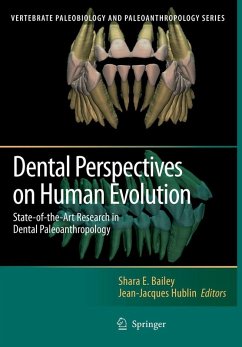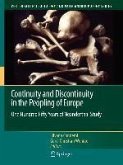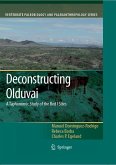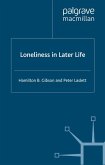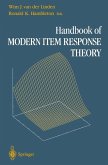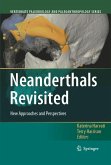The objective of the volume is to bring together, in one collection, the most innovative dental anthropological research as it pertains to the study of hominid evolution. In the past few decades both the numbers of hominid dental fossils and the sophistication of the techniques used to analyze them have increased substantially. The book's contributions focus on dental morphometrics, growth and development, diet and dental evolution.
Dieser Download kann aus rechtlichen Gründen nur mit Rechnungsadresse in A, B, BG, CY, CZ, D, DK, EW, E, FIN, F, GR, HR, H, IRL, I, LT, L, LR, M, NL, PL, P, R, S, SLO, SK ausgeliefert werden.
From the reviews: "The edited volume is based on the Dental Paleoanthropology symposium which was held in 2005 ... . The volume provides invaluable new results, discussions, and synthetic approaches which demonstrate how the study of dentitions can greatly contribute to our knowledge on past human variability and evolution. ... Overall it is an excellent volume which contains high quality contributions and is therefore essential to paleoanthropologist, anthropologists, and scholars from various related disciplines. ... an invaluable and timely comprehensive account of state-of-the-art research in dental paleoanthropology." Ron Pinhasi, PaleoAnthropology, 2008. "The resulting edited volume is a significant contribution to the fields of dental anthropology and paleoanthropology ... . Much of the work presented here is new and should be significant interest to both students and seasoned researchers in dental anthropology and paleoanthropology. In addition, this is an attractive volume, put together with excellent production values, lovely photographs ... and well executed and informative line drawings. ... will be of great interest and utility to biological anthropologists, paleoanthropologists, and vertebrate paleontologists." Robert L. Anemone, American Journal of Physical Anthropology, 2009. " This edited book explores new avenues of research in dental studies of human and non-human primates. The volume focuses on three broad themes - dental morphology, dental development and methodological approaches - and is divided into four sections. In the first section, the chapters focus on the use of new techniques in the study of dental morphological variation and evolution (e.g. direct observation of new traits and two- and three-dimensional techniques). The second section is concerned with dental microstructural morphology and how it can benefit our understanding of a population's life history. The third section presents new methods for analysing dentalgrowth and development, and chapters here offer varied approaches to examining the ontogeny of teeth including quantitative genetic analysis, radiographic analysis of dental events, and the computerised reconstruction of dental ontogeny. The final section comprises chapters focussing on the most up to date techniques used in evaluating dental attrition and diet. These papers shed light on the diets of our ancestors through investigations of functional morphology, isotopic analysis and microwear studies. As a whole, this book gives a good overview of the diversity of techniques currently being used to understand the dentition, with the ultimate goal of answering questions about hominin evolution." Journal of Human Evolution, 2009.

